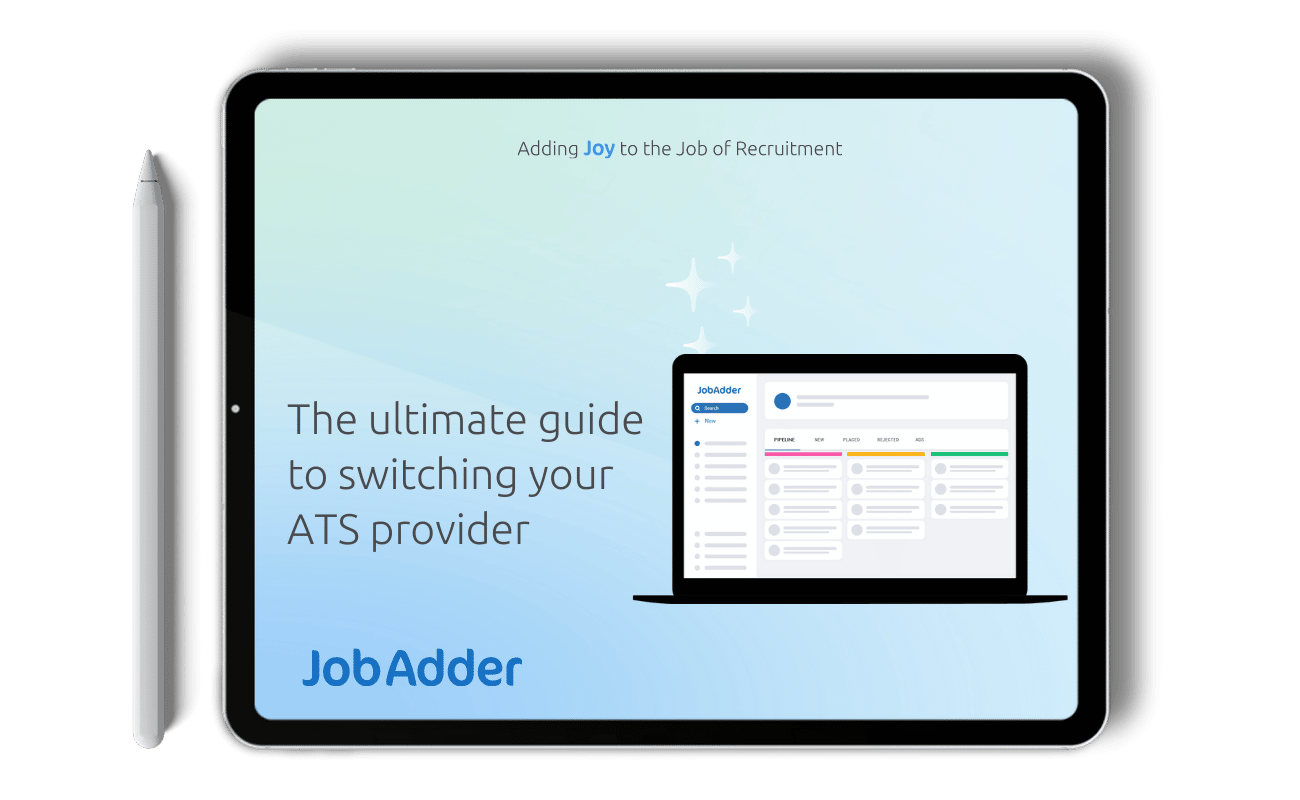Recruitment Blog
Contingent or retained: Which recruitment model works best?

Wondering whether your agency should offer a contingent or retained recruitment model but not sure how they differ and what would work best for your agency? We’ve got you covered.
The short answer is that contingency recruitment is based on a “no win, no fee” basis, where you only get paid if you secure the right candidate for your client and you compete with other recruiters to “win” the placement.
Retained recruitment is based on an exclusive commitment with your client, where you’re paid an upfront or scheduled fee and you’re responsible for finding the right candidate, you won’t be competing with other recruiters.
Contingency recruitment has traditionally been the go-to option for recruitment agencies but there’s a growing trend to move towards retained recruitment. In this blog, we’ll explore each model in more detail and give you all the info you need to determine which model is right for you and your agency.
DOWNLOAD OUR FREE EBOOK: The ultimate guide to switching your ATS provider
What is retained recruitment?
Retained search is a recruitment method where a company pays to retain the services of a recruiter in their efforts to fill positions.
With this approach, they only use one recruitment agency, giving them exclusivity and guaranteeing them an income, should they find a suitable candidate.
In contrast to contingency recruitment, companies will have to relinquish some control over the recruitment process. However, they will have the confidence that the placement agency will have sufficient commitment and motivation to deliver the best service.
Retained recruitment is usually suitable when looking for highly skilled and scarce professionals whose salaries are high, so executive search firms usually adopt the retained recruitment model.
However, other agencies are starting to see the benefits of retained recruitment and it’s becoming more popular across the recruitment sector.
Benefits of retained recruitment
With this recruitment strategy, you’ll have more control over the recruitment process as a retained recruiter. The benefits include:
- Consistency in pay and guaranteed income for the work you put in
- Security and exclusivity thanks to a contract with your client
- Less rush and time pressure, as you’re not fighting to be first
- Clear timelines and expectations as you’ll work closely with your client, rather than being one of a pack of recruiters
- You can customise the search to suit a company’s needs, as you’ll understand their processes and priorities
Disadvantages of retained search models
Though retained recruitment has some appealing benefits, it also has some disadvantages, such as:
- An upfront cost may deter some companies from working with your agency
- Some companies prefer the idea of recruiters competing for candidates
What is contingency search?
Contingency searches are a form of recruitment where a company uses recruitment agencies and other external recruiters to fill positions.
However, as the name suggests, there’s a contingency for companies; they’ll only pay if they hire a candidate you suggest.
As such, they only pay when the candidate accepts the job and they sign a contract. With this approach to recruitment, a company can have one or more recruitment agencies helping to fill a position.
At the same time, an internal HR department may also be actively assessing applicants. Should the internal team find a suitable candidate, the company won’t have to pay the recruitment agencies anything.
This gives the recruitment agencies greater incentive to front the best candidates as soon as they can to secure earnings. But, on the other hand, it also means that you must compete against other agencies or recruiters in order to quickly find the best candidates for the position.
Usually, contingency recruitment is suitable for filling positions quickly that may have numerous suitable candidates.
Benefits of contingency recruitment
By using a contingency recruitment model, you’ll have the potential to earn money based on suggested hires. Moreover, you’ll benefit from contingency recruitment in the following ways:
- Sending the best candidates as soon as possible, garnering a good reputation with companies
- Making the most of your talent pool and quickly identifying potential candidates
- Working on placing multiple jobs at once, increasing your earning potential
Disadvantages of contingency recruitment
Along with the benefits it offers, there are also downsides to contingency recruitment. They include:
- If the company doesn’t choose your candidate, you don’t get paid
- It may be hard to be first to the punch, forcing you to work quickly, which may result in accidental errors or oversights
- It may impact relationship building, as you don’t have any exclusive, ongoing commitments with companies
- You don’t have any guaranteed revenue so forward planning may be difficult
Contingent vs. retained recruitment: Key differences
Contingent recruitment and retained recruitment are two distinct approaches in the realm of hiring, each offering unique advantages and considerations. These methods cater to different organisational needs and preferences, influencing the outcome of the hiring process.
- Type of recruitment:
- Contingent: Non-exclusive engagement with multiple recruitment firms.
- Retained: Exclusive partnership with a single recruitment company.
- Bias:
- Contingent: Potential exclusive bias, multiple firms presenting same candidates.
- Retained: Retained bias, dedicated in-depth understanding of hiring needs.
- Recruitment firms:
- Contingent: Often associated with contingency recruiting firms.
- Retained: Involves exclusive partnership with a recruitment company.
- Candidate focus:
- Contingent: Active job seekers, quick identification through resumes and databases.
- Retained: Emphasis on passive candidates and headhunting for quality.
- Candidate quality:
- Search process:
- Contingent: Faster but potentially less in-depth search process.
- Retained: More in-depth search, especially for senior or specialised positions.
- Cost:
- Contingent: Often involves a “no hire, no fee” model, competitive pricing.
- Retained: Higher cost due to exclusivity and thorough search process.
In essence, the choice between contingent and retained recruitment hinges on the urgency of hiring, the level of exclusivity required, and the emphasis placed on finding the most qualified candidates. While contingent recruitment may offer speed, retained recruitment tends to provide a more focused and exhaustive search for the ideal talent.
Price comparison: Contingent or retained recruitment?
As mentioned above, the pricing strategy of contingency recruitment is simple. A company only pays if there’s a successful placement. Upon successful placement, the company will pay the recruitment agency fee, which is a percentage of the candidate’s annual salary.
When it comes to retained recruitment, pricing varies significantly. First, recruitment agencies must receive some payment prior to beginning the recruitment process. This is because this strategy requires a lot of effort and intensive research to ensure the best candidates.
To begin with, a company will have to pay an upfront fee for you to initiate the search. From there, the company may have to make two more payments when they receive a shortlist of candidates and when they make a hire.
Often, the total fee is just divided in three across these three stages, so it may not be any more expensive than using contingency recruitment.
Which recruitment strategy suits you: Contingent or retained?
Each of these approaches has its advantages and disadvantages.
Each model has been traditionally used for different candidate levels with retained most commonly used for executive search. However, this may be shifting as recruiters seek out the security of exclusivity and the guaranteed income of the retained model.
Explore these two models and choose the strategy that best suits your skillset and potential to advance as a recruiter.
If you’re confident in your abilities to quickly scout the best candidates for a position and beat out the competition, having a contingency recruitment strategy may be the better option.
However, if you prefer to build relationships with companies and take your time to conduct a thorough search to pinpoint the best candidates then retained recruitment may be the model that works best for you.
Starting your own recruitment agency, setting up fees and processes and investing in the right technology can be stressful, so making the best decisions upfront (whether it’s what recruitment model you use or what applicant tracking software you adopt) can prove crucial.
Frequently asked questions
How do retained recruiters get paid?
Retained recruiters are compensated through a predetermined fee structure. Typically, they receive a portion of their fee upfront, another part during specific milestones, and the remainder upon successful placement of a candidate. This payment model incentivises retained recruiters to thoroughly understand the client’s hiring needs and conduct an exhaustive search for the right talent.
What is a retained position?
A retained position refers to a job opening for which a company has engaged the services of a retained search firm. In this scenario, the search firm is exclusively tasked with finding top-quality candidates for the role. This exclusivity ensures a dedicated and in-depth search process, addressing what is known as the retained bias, which aims to match the best candidates to the organisation’s requirements.
What does a contingent job offer mean?
A contingent job offer is one where employment is offered to a candidate based on specific conditions, such as the successful outcome of a background check, reference verification, or other predetermined criteria. Contingent job offers are commonly extended before a new hire formally joins the company, pending the satisfactory completion of these conditions.
Do contingent employees get benefits?
Contingent employees, such as temporary workers or freelancers, often receive fewer benefits compared to full-time employees. While some companies may offer certain benefits to contingent workers, like access to shared facilities and limited insurance, the extent of these benefits can vary significantly depending on the company’s policies and the nature of the contingent arrangement.
What are the different types of bias in retained and contingent recruitment services?
In retained recruitment, a retained bias exists due to the exclusive nature of the partnership between the organisation and the retained search firm. This bias leads to a more focused and dedicated search process. On the other hand, in contingent recruitment, there is a potential for exclusive bias as multiple contingency search firms might present the same candidates to hiring managers, potentially causing confusion. The focus in contingent recruitment can sometimes lean toward quantity over quality due to the competitive nature of the arrangement.
Get the right candidates in the right positions with JobAdder
In the quest for effective recruitment strategies, the choice between contingent and retained models holds significant weight. While contingent recruitment prioritises speed and agility, retained recruitment offers exclusivity and depth in the search for top-tier talent. Finding the optimal fit depends on an organisation’s unique requirements, timelines and resources.
For businesses seeking to leverage the benefits of both approaches, JobAdder’s recruitment software emerges as a versatile solution. By simplifying candidate management, job postings and team collaboration, JobAdder empowers recruiters to navigate both models with finesse. As the competitive landscape evolves, JobAdder remains a powerful ally in securing the right talent, whether through the swiftness of contingent recruitment or the precision of the retained search.
Not sure what’s involved in switching your ATS? Download our step-by-step guide.

Related blog posts

To excel in the competition for top talent, proactive workforce planning is essential. Traditional methods struggle to adapt to evolving …
Ready to get started?
Talk to one of our friendly team members



